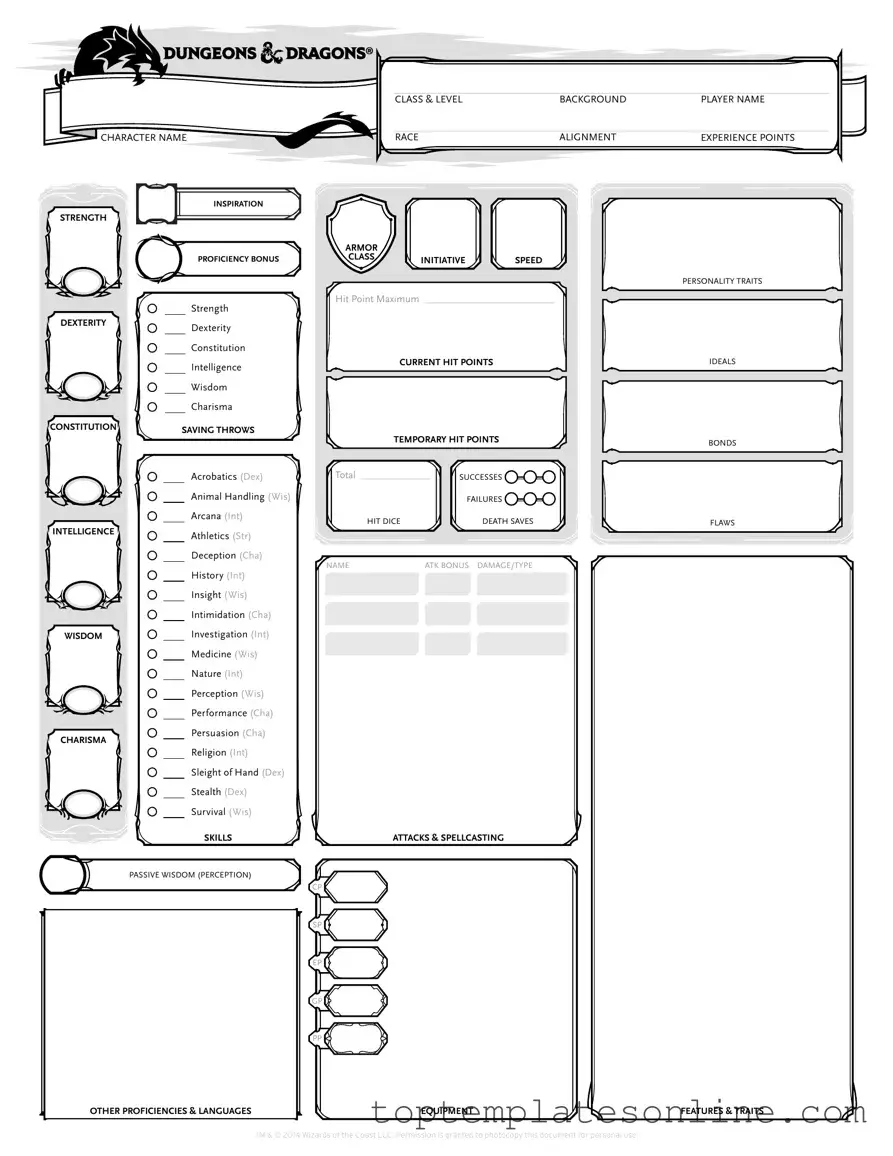The Dungeons & Dragons (D&D) character sheet is an essential tool for players, serving as a comprehensive record of a character's abilities, traits, and progression throughout the game. This form captures vital information, such as a character's name, race, class, and background, which helps to shape their identity within the fantasy world. Additionally, it includes sections for tracking hit points, armor class, and saving throws, which are crucial for determining a character's survivability in various encounters. Players also find spaces for skills, spells, and equipment, allowing them to strategize and make informed decisions during gameplay. The character sheet not only facilitates gameplay but also fosters a deeper connection between players and their characters, as it encapsulates their journey, achievements, and growth within the D&D universe. Understanding how to effectively use this form can enhance the gaming experience, making it more immersive and enjoyable for everyone involved.
